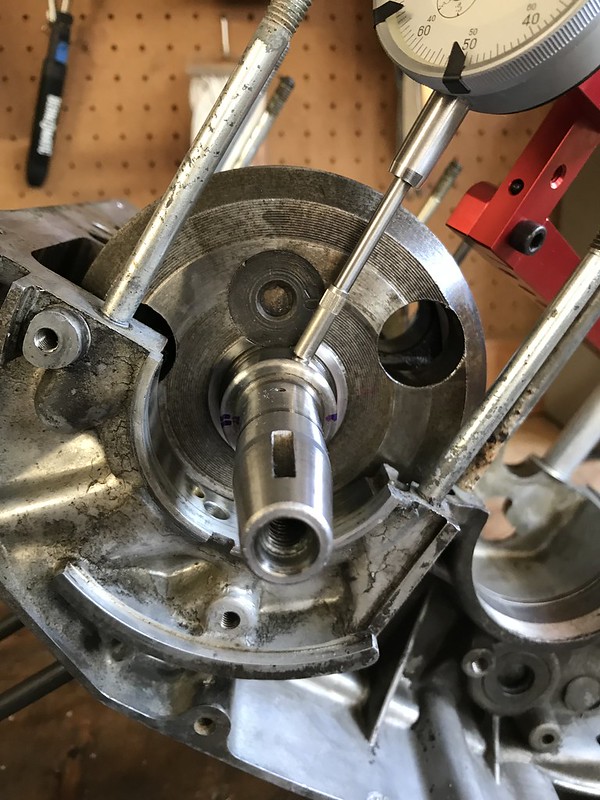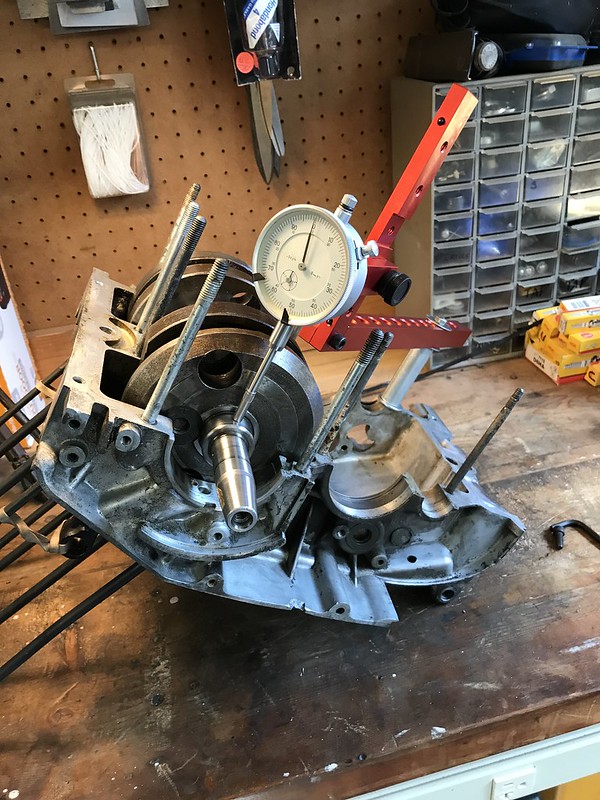Perfect result for understanding what is happening.
OK - here we go. Cradle the crank in your arm with some cloth (an old sweater or coat is fine) around it to dampen any 'ringing'. Leave the 'wonky end' exposed, but support the rest.
With a copper mallet (not a steel hammer), strike the perifery of the flywheel hard, once, next to the high spot. You're trying to move the flywheel around the crankpin so that the shaft runs concentrically.
Next - put it back in your measuring setup and check what happened. If the 'runout' didn't change, you didn't hit hard enough. If the 'hi' has reduced you have moved it and need to use how much it moved to judge how hard to hit it next time.
If the hi has become the low, you hit it too hard....
Be prepared to go 'too far' and need to hit it back the other way.
I can guarantee that when you've got it within 1 thou, you will have a grin from ear to ear...... :-)
Feel free to ask questions. In a PM if that is easier.
Good luck!
G
Seadog wrote:Yes, that's 0.001" per division! That's 0.014+" off. The other side isn't as bad at 0.002" off. I've marked the highs (II) and lows (I). See the photo, below, and the relationship of the marks to the crank pin. Where do I hit it, how hard, with what and how do I brace it? And honestly, if this doesn't work, don't worry about it; it's on me.

G-Man wrote:Is that 0.001" per division?
Way too much if it is. You should be down to less than one division.
Using a piece of chalk or crayon, mark the high spot and low spot. Then compare with where the crank pin is. That will tell you which way to whack the flywheel to get it right. I can help you with that. Don't whack anything when it's still in the crankcase..
What is the other end like?
G


